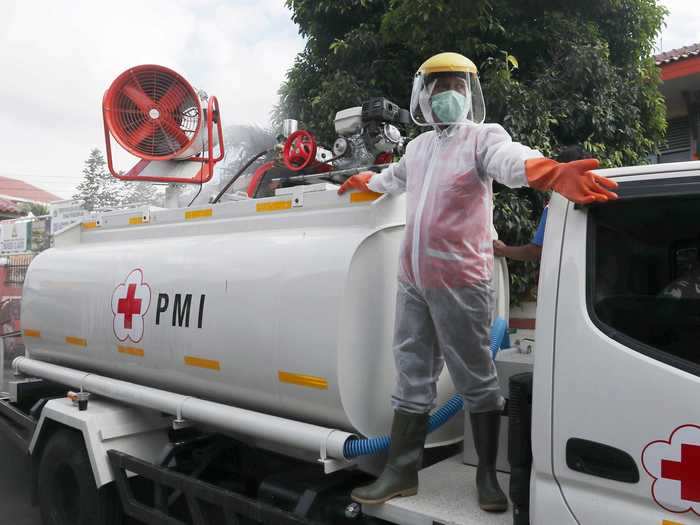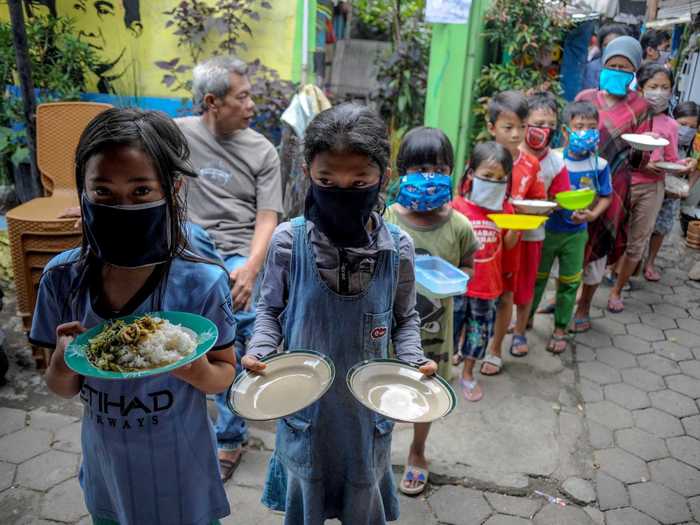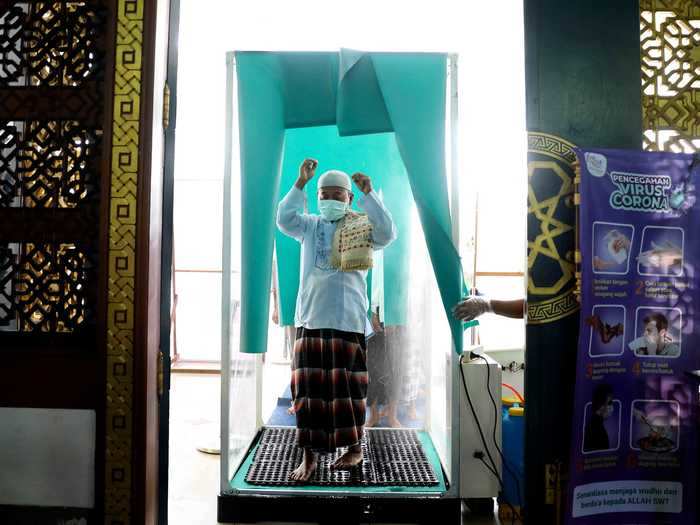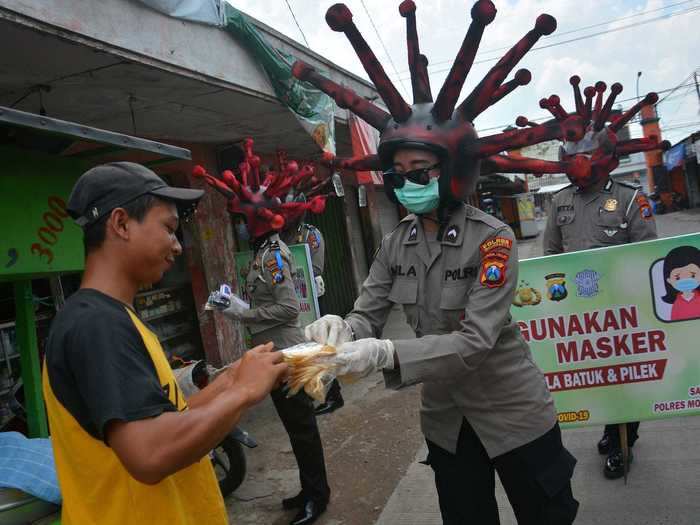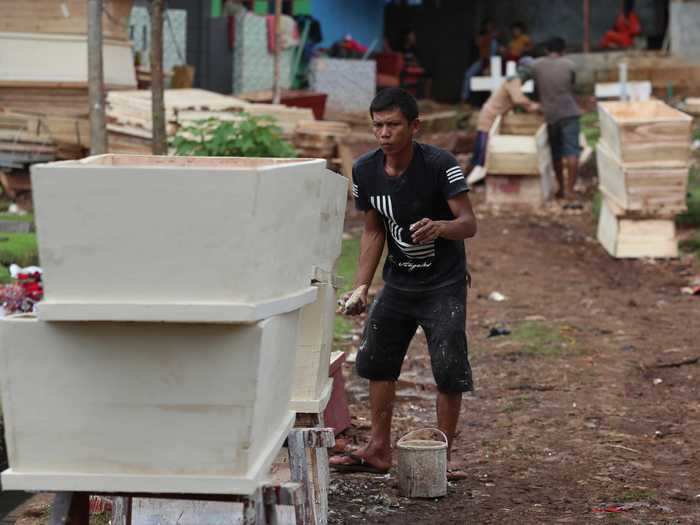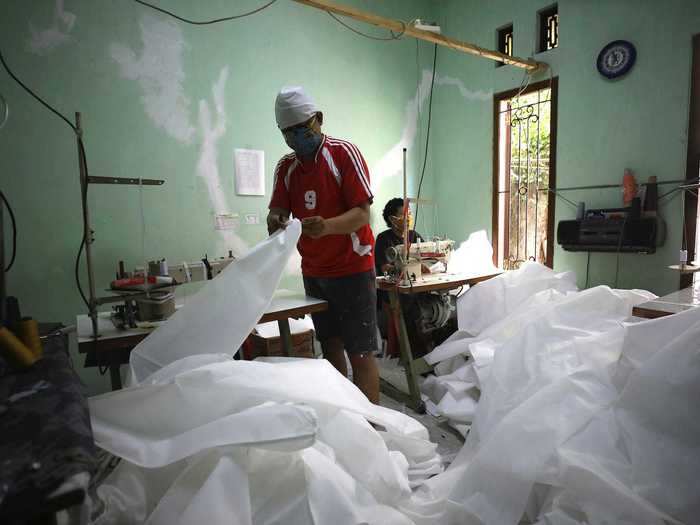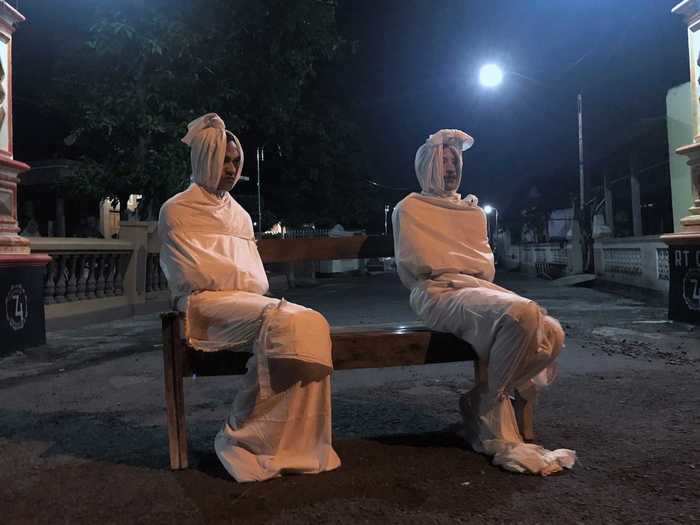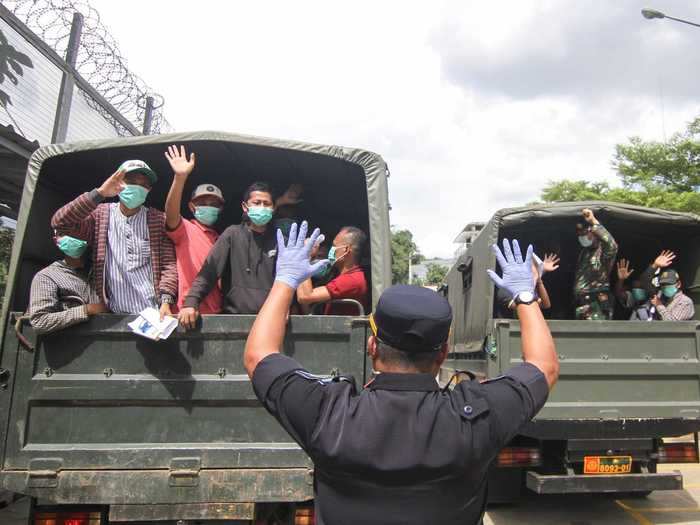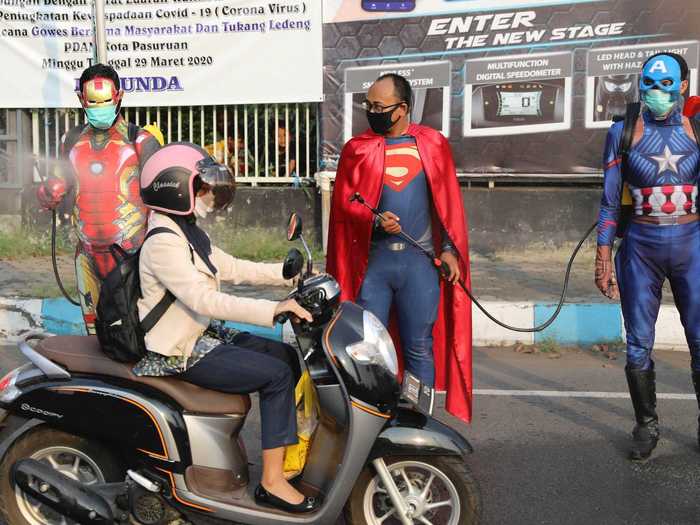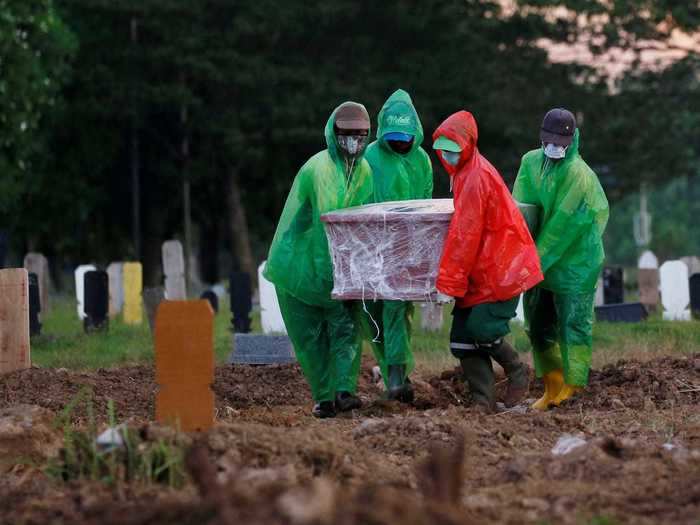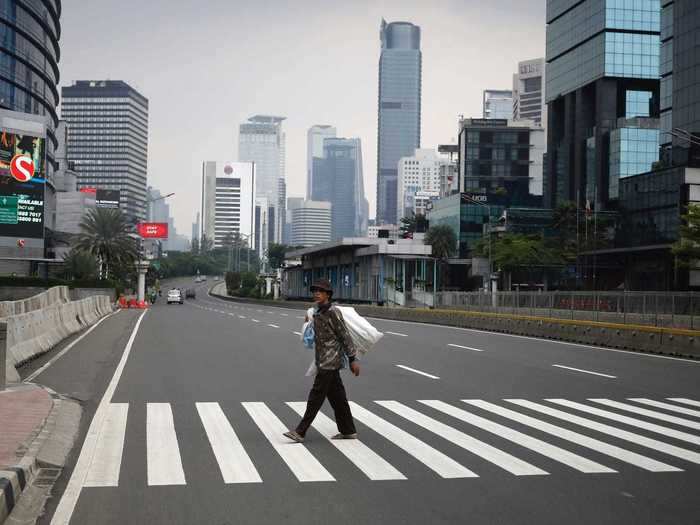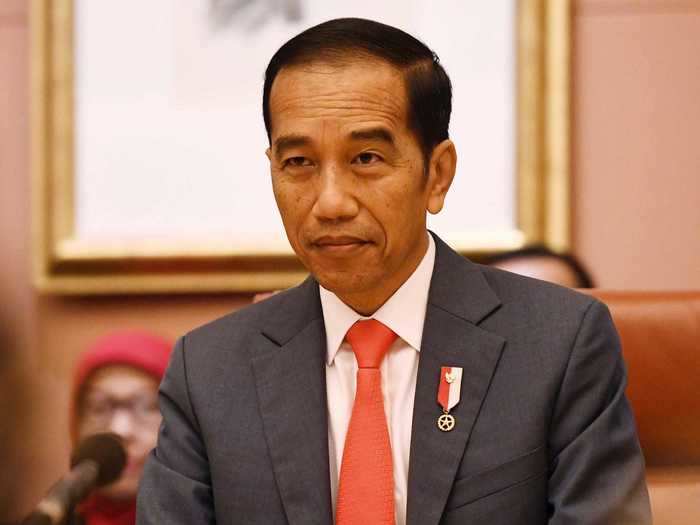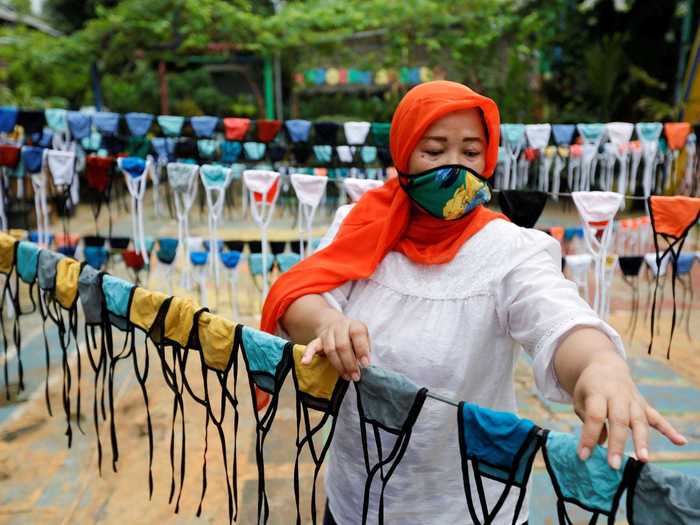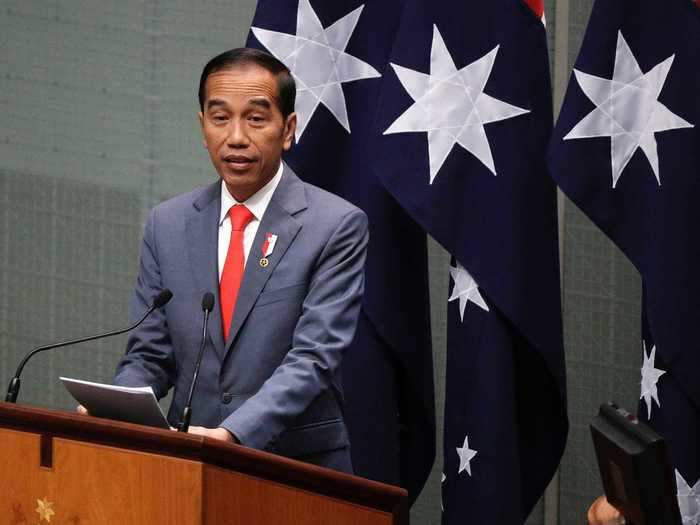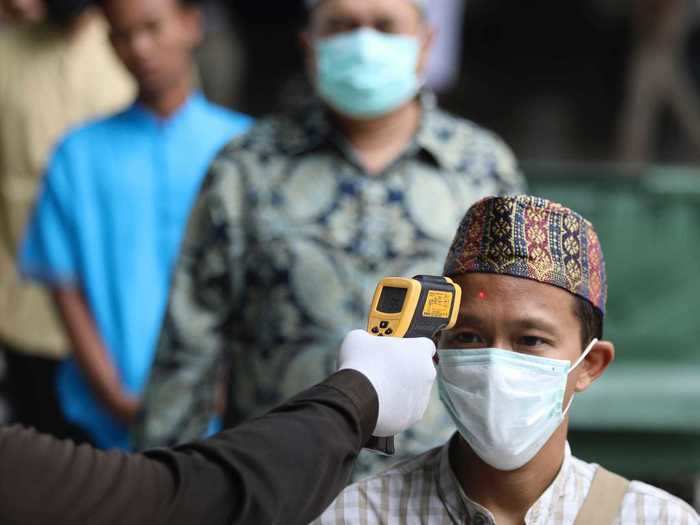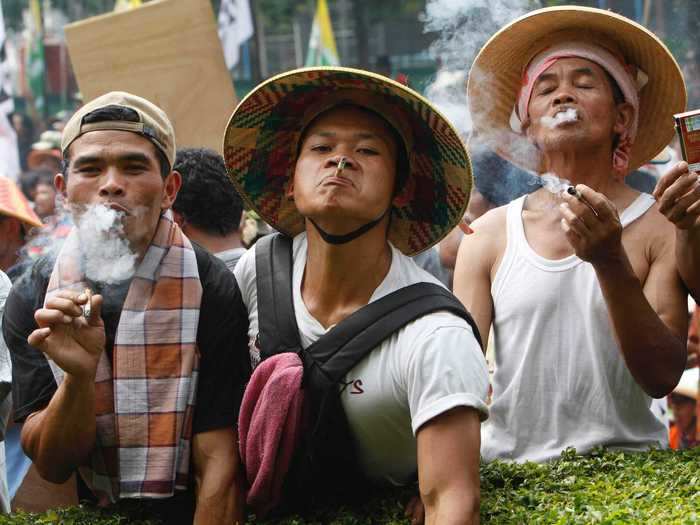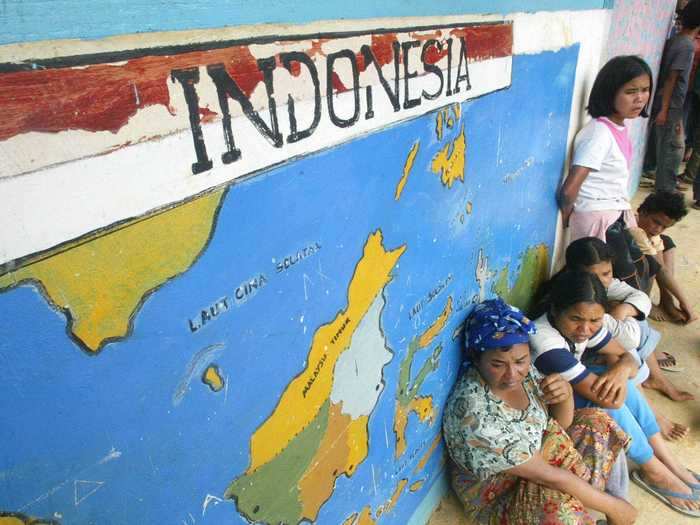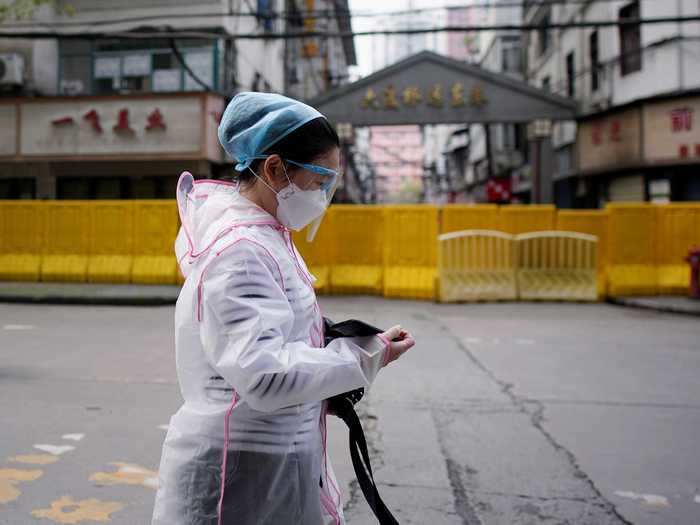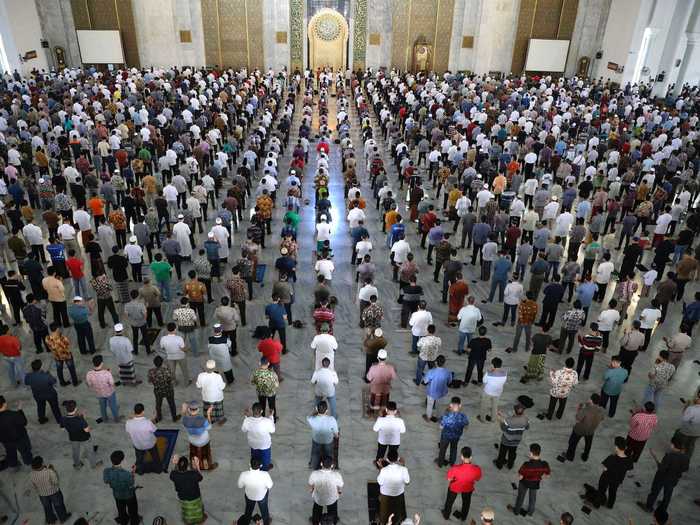Two volunteers sit on a bench as they play the role of 'pocong', or known as 'shroud ghost', to make people stay at home amid the spread of coronavirus in Indonesia on April 1.Stringer / Reuters
- Indonesia, which has a small healthcare workforce, the fourth largest population in the world, and is spread out over 17,000 islands, has had an unusual trajectory dealing with the coronavirus.
- While China was imposing lockdowns in February, Indonesia didn't declare its first case until March 2. Its health minister said the lack of cases was thanks to god, while experts put it down to far too little testing.
- Now, Indonesia has the most COVID-19 deaths in any Asian country outside of China. As of April 15, it had 4,839 confirmed cases and 459 deaths, according to data from Johns Hopkins University.
- Visit Business Insider's homepage for more stories.
Indonesia, the world's fourth most populous nation with 264 million people, has resorted to "ghosts" as it tries to get people to follow social distancing protocols.
In an unusual trajectory for fighting the coronavirus, Indonesia didn't declare its first case until March 2. Before that, its health minister said the country had god to thank, while international experts said it was due to far too little testing.
Now, Indonesia has the most COVID-19 deaths in any Asian country outside of China. As of April 15, it had 4,839 confirmed cases and 459 deaths, according to data from Johns Hopkins University.
It has been criticized for a lack of testing, meaning the exact situation was never really clear. At one point, Indonesian President Joko Widodo admitted that his government held back information to stop the public from panicking.
The government has since increased precautionary measures — including releasing 30,000 prisoners — but stopping the coronavirus will be difficult.
Here's what it has been like in Indonesia, in photos.
Read the original article on
Insider
If it does go ahead in May, according to The Conversation: "It is hard to imagine an event more likely to trigger a catastrophic outbreak."
Now, Indonesia has 4,839 confirmed cases and 459 deaths. Even if testing continues to increase, and restrictions are followed, it could soon have to deal with mudik, a yearly internal migration where millions of Muslims travel home each year. In 2019, about 18 million people from Indonesia traveled for it.
The government announced testing would increase, too. The aim was for 9,000 tests per day. It was a lofty goal since by April 13, Indonesia had only tested 27,000 people, a tiny proportion of its population of 270 million.
The stark change in just over a month led to changes. On April 7, Putranto, the health minister, finally allowed Jakarta's authorities to impose stricter measures, including closing schools, workplaces, and religious events, for at least two weeks.
The bad news continued. On April 6, Indonesia reported 218 new cases — its largest daily increase in coronavirus cases. It also had 209 deaths, which meant it had the highest death rate in Asia outside of China.
After getting over the initial excitement, the ghosts appeared to work and more people stayed indoors. Despite this, on April 5, Indonesia became one of the countries with the highest COVID-19 death rate in the world. It was sitting at about 9 percent, just below Italy.
In April, ghosts appeared. At night volunteers would play the role of 'pocong,' or the 'shroud ghost,' to make people stay at home to stop the spread of coronavirus. These ghosts represent the trapped souls of the dead. But the dress-up backfired, and people actually came out to get a glimpse of them haunting the streets.
On March 31, to help ease the pressure on the country's straining prison system, which has about 270,386 prisoners — twice its official capacity — the government declared it would release 30,000 prisoners early. Widodo also declared a national public health emergency, but not a lockdown.
In late March, a study released by the Centre for Mathematical Modeling of Infectious Diseases in London estimated that as few as 2% of Indonesia's coronavirus infections were reported, meaning there could have been as many as 89,000 cases.
But, according to the BBC, it's likely that could never be proven.
Source: BBC
Reuters reported that Jakarta's governor, Anies Baswedan, as well as several public health experts suspected that the high burials pointed to under-reporting of the coronavirus. Baswedan had already declared a state of emergency for his city on March 20.
This was being done as the national picture became clearer. At the end of March, Reuters reported that over the previous month 4,400 people were buried in Jakarta, the country's epicenter for cases. This was the highest number of burials over the last several years. The next highest was 3,100 burials in March 2019.
The government began work on a new hospital on an island called Galang, as well as converting an athletic center in Jakarta into a health center.
By March 20, Indonesia had 369 cases. Over the next week, concerns arose over the country's lack of protective equipment for healthcare workers. Reports were released showing doctors wearing raincoats, and by April 10, 26 doctors had died from the coronavirus, sparking further concerns over the healthcare system.
On March 14, the president admitted the government had been holding back information about the coronavirus because he said: "we did not want to stir panic."
Still, Widodo refused to put his country on lockdown. Instead, the government temporarily stopped face masks and sanitizers from being exported, and, to prepare for Ramadan, it let traders import garlic and onions without permits so there would be enough supplies for the religious month.
On March 2, Indonesia confirmed its first infection.
The following day, Indonesia still didn't have a single case of the coronavirus. The reason, according to Terawan Agus Putranto, Indonesia's top health official, was god. "We owe it to God. It's because of our prayers," he said.
Putranto also called a study from Harvard University that suggested the country did in fact have coronavirus cases "insulting."
Sources: South China Morning Post, Al Jazeera
As China imposed strict quarantine measures, Indonesia went the other way. Although flights from China were stopped on February 5, on February 17, President Joko Widodo unveiled a plan to provide 30 percent discounts to travelers for flights and accommodation to try and boost its tourism industry.
Indonesia's healthcare system was also not ready. According to the World Health Organisation, in 2017 it had four doctors to every 10,000 people. Italy has ten times as many. On top of that, it had one hospital bed for every 1,000 people. South Korea has eleven times as many, while China has four times as many.
On January 31, an Australian newspaper had the scoop on Indonesia. The Sydney Morning Herald revealed that Indonesia lacked the testing equipment — specifically a chemical — that was necessary to detect the coronavirus. So even if there had been cases they could have slipped through.
It also has the highest rate of male smoking in the world, at about 68%, and the country's five leading causes of death are all tobacco-related. Even though women smoke far less, households deal with secondhand smoke. All of this could mean people in Indonesia are susceptible to the coronavirus, since it affects the lungs.
Both Indonesia's size and its remoteness — it's made up of 17,000 islands, with 8,000 of them populated — put it in an unusual position compared to most countries. According to the BBC, "even in good times its healthcare system is poor, particularly in remote areas."
Cases were likely, especially since Indonesia gets millions of visitors each year, including tens of thousands from Wuhan, China, the epicenter of the outbreak. According to Foreign policy, Indonesia is one of the top 10 destinations for people from Wuhan. Between December 2018 and November 2019, 98,700 people visited from Wuhan.
Indonesia, the fourth most-populated country in the world with 264 million people, did not declare a confirmed case of the coronavirus until March 2, but that was far from the beginning of the country's dealings with the virus.

